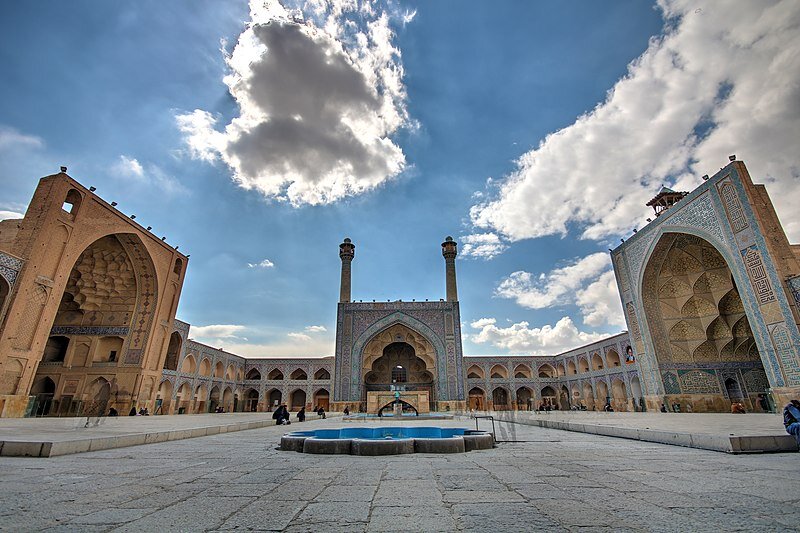Jameh Mosque of Isfahan is like a museum of Iranian architecture: minister

TEHRAN –UNESCO-tagged Jameh Mosque of Isfahan is a museum of architectural styles of different periods, Cultural Heritage, Tourism and Handicrafts Minister Ezatollah Zarghami has said.
He made the remarks during a visit to the World Heritage site on Friday in the heart of the historical texture of the central city of Isfahan.
Taking a tour of the mosque is like exploring a museum of Iranian architecture, the minister added.
This structure is such an encyclopedia with over one thousand three hundred years of history, he noted.
This masterpiece shows the exaptational abilities and artistic tastes of our ancestors, he explained.
The Jameh Mosque of Isfahan, also known as Atiq Mosque and Friday Mosque is the oldest preserved edifice of its type in Iran and a prototype for later mosque designs throughout Central Asia.
UNESCO has it that the mosque can be seen as a stunning illustration of the evolution of mosque architecture over twelve centuries.
The complex, covering more than 20,000 square meters, is also the first Islamic building that adapted the four-courtyard layout of Sassanid palaces to Islamic religious architecture.
Its double-shelled ribbed domes represent an architectural innovation that inspired builders throughout the region. The site also features remarkable decorative details representative of stylistic developments over more than a thousand years of Islamic art.
Throughout history, the mosque complex has evolved into its current condition as extensions have been added. Therefore, this building cannot be attributed to any particular historical era.
The mosque’s core structure dates back to pre-Islamic Iran, according to archaeological excavations and historical records. It is said that the building was first built as a fire temple, and it had been used to practice religious rituals. This assumption was confirmed by the discovery of a column torus engraved with Sassanid motifs.
However, the remains from the Seljuk era (1037–1194), especially the key elements of the ground plan, the four iwans (porches), and the two domes are sufficient to illustrate the advances in mosque and dome architecture made at the time.
Soaked in a rich history and culture, Isfahan was once a crossroads of international trade and diplomacy in Iran. Now, it is one of Iran’s top tourist destinations for good reasons. The ancient city is filled with many architectural wonders such as unmatched Islamic buildings, bazaars, museums, Persian gardens, and tree-lined boulevards. It’s a city for walking, getting lost in its mazing bazaars, dozing in beautiful gardens, and meeting people.
The city has long been nicknamed as Nesf-e-Jahan which is translated into “half the world”; meaning seeing it is relevant to see the whole world. In its heyday, it was also one of the largest cities in the region with a population of nearly one million.
ABU/AFM

Leave a Comment